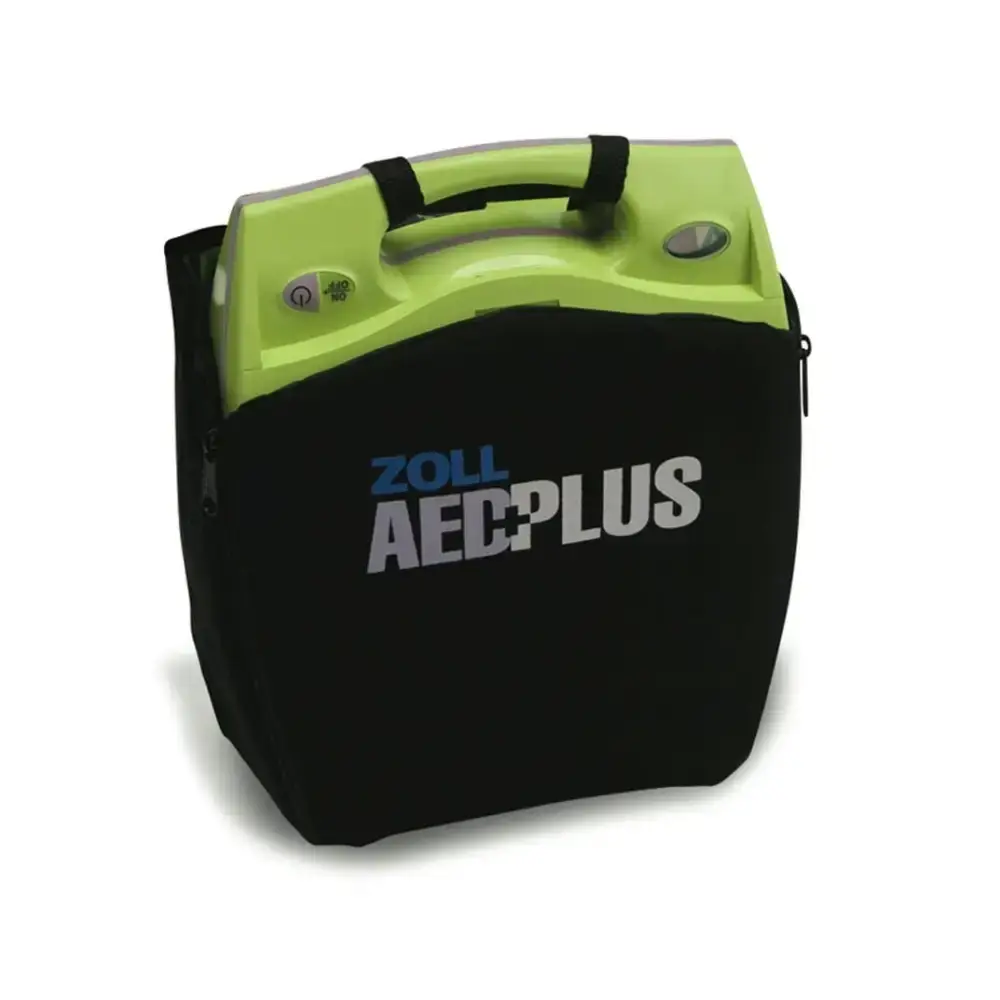Life-Saving Requirements That Will Protect Workers
Ontario is making history as the first province in Canada to require AEDs on construction sites, introducing landmark legislation that will fundamentally change workplace safety standards across the province. The new construction AED law, part of Ontario's Working for Workers Seven Act 2025, represents a critical advancement in protecting construction workers from sudden cardiac emergencies.
Understanding Ontario's New Construction AED Requirements
The new legislation mandates that construction projects with a duration of three months or longer, with 20 or more workers employed on the jobsite, must have Automated External Defibrillators (AEDs) readily available. This requirement acknowledges the high-risk nature of construction work and the urgent need for immediate cardiac emergency response capabilities on job sites.
The AED machine requirement addresses a critical gap in construction site safety. Construction workers face elevated risks of cardiac events due to the physically demanding nature of their work, extreme weather conditions, and high-stress environments. When sudden cardiac arrest occurs, every second counts, and having an AED defibrillator on-site can literally mean the difference between life and death.
The Importance of AEDs in Construction Environments
Construction sites present unique challenges for emergency medical response. Remote locations, limited access for emergency vehicles, and the time-sensitive nature of cardiac emergencies make on-site AEDs essential safety equipment. An AED defib device can restore normal heart rhythm within minutes of sudden cardiac arrest, dramatically improving survival rates when professional medical help may be minutes or even hours away.
The significance of this legislation extends beyond individual worker safety. It demonstrates Ontario's commitment to creating the safest possible working environments and sets a precedent that other provinces may follow. Construction companies now have a clear mandate to invest in life-saving technology that protects their most valuable asset: their workers.
Good Samaritan Protection and AED Use in Ontario
One of the critical aspects supporting the new AED requirements is Ontario's robust Good Samaritan law framework. The Good Samaritan Act Ontario provides essential legal protections for individuals who use AEDs during emergencies, addressing concerns about good samaritan liability that might otherwise prevent people from taking life-saving action.
Ontario's Good Samaritan statute protects individuals who provide emergency assistance, including AED use, from legal liability when acting in good faith. This good citizen law ensures that construction workers and supervisors can confidently use AED machines without fear of good samaritan lawsuit complications, even if they are not medical professionals.
The Good Samaritan law Ontario specifically protects those who:
Act in Good Faith: Individuals who genuinely attempt to help during a cardiac emergency are protected from liability, even if their actions don't produce the desired outcome.
Follow Proper Procedures: When using an AED according to the device's voice prompts and instructions, users are protected under the Good Samaritan liability framework.
Respond to Emergencies: The law recognizes that emergency situations require immediate action, and protects those who step forward to help when professional medical assistance isn't immediately available.
This legal protection framework is crucial for the success of the new AED requirements. Without Good Samaritan protection, workers might hesitate to use AEDs during emergencies, potentially costing lives. The combination of mandatory AED availability and legal protection for users creates a comprehensive safety system that encourages prompt, effective emergency response.
Implementation and Compliance Considerations
Construction companies preparing for the new AED requirements must consider several important factors. The automatic defibrillator price varies significantly based on features and capabilities, but the investment in worker safety far outweighs the AED cost considerations. Basic AED machines suitable for construction site use typically range from $2,000 to $2,500, making them a relatively modest investment compared to other safety equipment requirements.
To support implementation, the Workplace Safety and Insurance Board (WSIB) would reimburse constructors for initial compliance costs, helping offset the price automatic defibrillator expenses that companies will incur. This financial support demonstrates the government's commitment to making the transition as smooth as possible for construction businesses.
Key implementation considerations include:
Device Selection: Choosing AEDs that can withstand harsh construction environments, including dust, moisture, and temperature extremes common on job sites.
Strategic Placement: Positioning AED machines in easily accessible locations that can serve the entire construction site effectively while protecting the devices from damage.
Training Requirements: Ensuring multiple workers on each site receive proper AED training and CPR certification to maximize the effectiveness of the devices.
Maintenance Protocols: Establishing regular inspection and maintenance schedules to ensure AEDs remain functional and ready for emergency use.
The Role of Professional AED Suppliers
Given the complexity of selecting and maintaining AEDs for construction applications, partnering with a reliable supplier becomes crucial. For Ontario construction companies, AED.ca stands out as the premier choice for comprehensive AED solutions tailored to the unique challenges of construction environments.
AED.ca offers several distinct advantages for Ontario construction companies:
Construction-Specific Expertise: AED.ca understands the harsh conditions of construction sites and can recommend A_E_D models specifically designed to withstand challenging environments while maintaining reliability.
Ontario Regulatory Knowledge: As specialists in the Ontario market, AED.ca provides expert guidance on compliance with provincial regulations, Good Samaritan Act requirements, and workplace safety standards.
Ongoing Support and Maintenance: Construction sites require reliable equipment, and AED.ca provides comprehensive maintenance services, ensuring AEDs remain functional throughout the demanding construction project lifecycle.
Competitive AED CA Pricing: Understanding budget constraints in construction, AED.ca offers competitive pricing on quality devices while providing exceptional value through superior support and service.
AED Recommended for Construction Sites
The AED recommend by AED.ca for construction sites is the Zoll Plus AED. (Best AED Construction)
Here are a few of the reasons why they recommend this unit:
-
Real time Audio & Visual CPR feedback - improves positive outcomes by 50%
-
Pads and batteries both last 5 years - lowest cost of ownership
-
Highly resistant to dust and moisture and has an ingress protection (IP) rating of 55. This is among the highest in the industry.

Here is a link to the product on AED.ca's website for more information.
https://aed.ca/products/zoll-aed-plus-fully-automatic-aed-with-cover
Long-Term Impact on Construction Safety
The new construction AED law represents more than just another safety requirement; it signals a fundamental shift toward proactive emergency preparedness in Ontario's construction industry. By mandating AED availability, the province acknowledges that preventing workplace fatalities requires more than traditional safety measures—it requires immediate response capabilities for medical emergencies.
This legislation will likely influence safety practices beyond construction sites. As awareness of AED effectiveness grows through construction industry implementation, other industries and public spaces may adopt similar requirements. The precedent set by Ontario's construction AED law could catalyze broader adoption of life-saving technology across various sectors.
Construction companies that embrace this change proactively, rather than viewing it as merely another compliance burden, will find themselves better positioned to attract and retain workers who value comprehensive safety programs. The presence of AEDs demonstrates a commitment to worker welfare that extends beyond basic regulatory compliance.
Preparing for Implementation
Construction companies should begin preparing for the new AED requirements immediately, even before final legislation is passed. Early preparation ensures smooth compliance and demonstrates proactive commitment to worker safety. Key preparation steps include:
Budget Planning: Incorporating AED costs into project budgets and understanding available WSIB reimbursement options.
Supplier Selection: Partnering with reliable AED suppliers like AED.ca who understand construction industry needs and Ontario regulatory requirements.
Training Scheduling: Planning worker training programs to ensure adequate numbers of AED-certified personnel on each qualifying job site.
Policy Development: Creating company policies and procedures for AED maintenance, use, and emergency response protocols.
Conclusion
Ontario's new construction AED law represents a watershed moment in workplace safety legislation. By requiring AEDs on major construction sites, the province is taking decisive action to protect workers from sudden cardiac arrest—a leading cause of workplace fatalities. Combined with robust Good Samaritan protection, this legislation creates a comprehensive framework that encourages immediate, effective emergency response.
For construction companies, compliance with the new AED requirements represents an opportunity to demonstrate leadership in worker safety while potentially saving lives. By partnering with experienced suppliers like AED.ca, construction companies can ensure they not only meet regulatory requirements but implement truly effective emergency response capabilities.
The investment in AED technology is ultimately an investment in human life. As Ontario leads Canada in recognizing the critical importance of immediate cardiac emergency response, construction companies have the opportunity to be part of a life-saving transformation that will protect workers for generations to come. The question isn't whether companies can afford to implement AED programs—it's whether they can afford not to when lives hang in the balance. Contact AED.ca today for more information.






